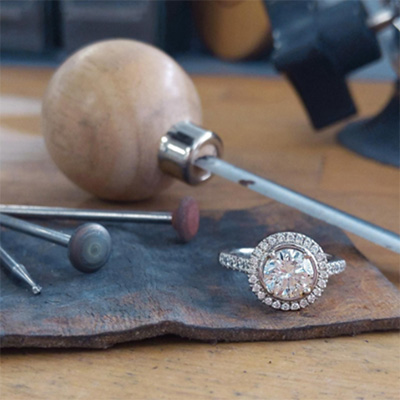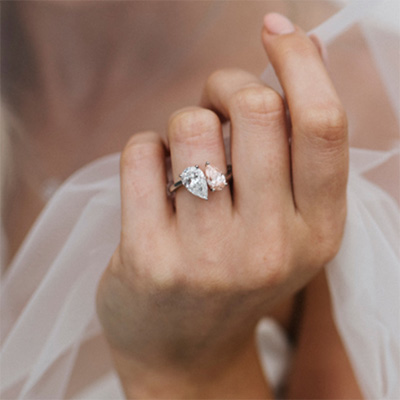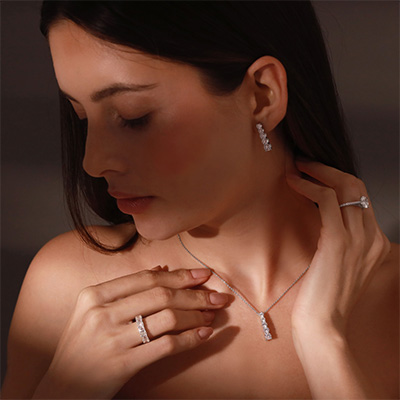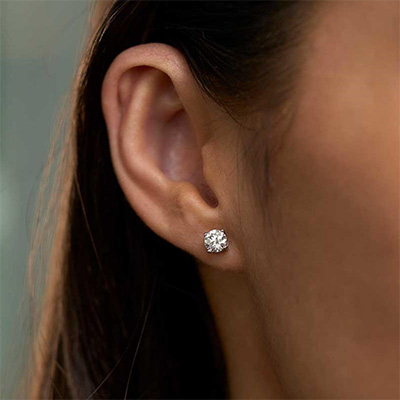GEMSTONE FOCUS: A GUIDE TO ORANGE GEMSTONES IN JEWELLERY
|
Bright, energetic and bursting full of life, the colour Orange is definitely not a shade for the fainthearted. Yet the shade returns year after year, demanding to be worn with confidence and panache. It can be found all around us, from our Pumpkin Spiced Lattes to the spectrum of hues on the turning autumn leaves, and when it comes to jewellery, there are a whole variety of gemstones which naturally occur in the colour which you may not have even known about. Although orange gemstones aren’t as conventionally popular in jewellery designs, they can make a truly stunning addition to your jewellery box. The shade is evocative of energy, happiness, joy, enthusiasm and general positivity – so why not embrace the colour Orange through accents in your jewellery – it’s guaranteed to lift your spirits! |
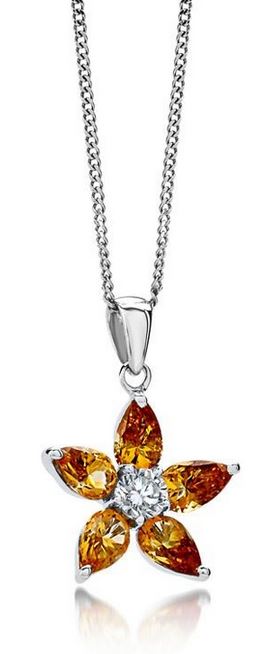 |
| Sapphire: | ||
| Though many people automatically associate the gemstone Sapphire with the colour blue, the gem occurs naturally in a whole variety of shades, including orange. The incredibly rare, orange-pink variety of Sapphires, are also known as Padparadschas. The name derives from the Sinhalese word ‘padma radschen’ which means lotus blossom, because the colour is similar to that of the centre of that flower. Orange sapphires are said to be a gentle stone with many positive attributes which will promote calmness and trust. Today, many Padparadschas are heat treated to enhance the natural colouring of the stone – though most discovered are less than two carats in weight, there’s a stone from Sri Lanka on display at the American Museum of Natural History in New York that weighs an incredible one hundred carats! | 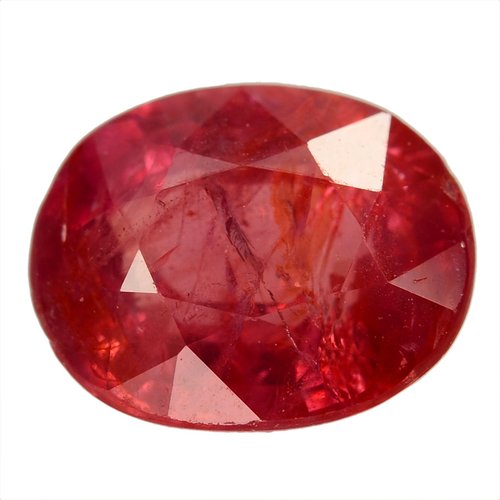 |
| Citrine: | ||
| Taking on a lighter, golden shade of orange, the Citrine is another joyful stone with a bright energy which is said to promote good luck in ‘unexpected ways’ – it was considered a positive superstition to place a Citrine in the draw of a till to bring good fortune to your sales. Often referred to as the ‘stone of the mind,’ ancient cultures believed that placing a Citrine on the forehead of an elder would increase his psychic power and was used by healers to boost self-esteem. Sources of Citrine have stretched far across the globe, with the gemstone having been discovered in Brazil, Bolivia, many countries in Africa and even parts of the Soviet Union. | 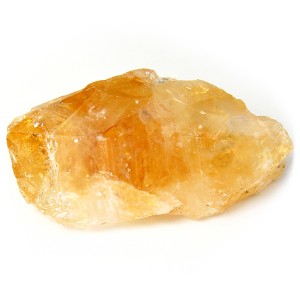 |
| Garnet: | ||
| As Sapphires are synonymous of the colour blue, Garnets traditionally conjure imagery of a deep red stone. However Garnets also naturally occur in shades of mandarin orange, and are definitive by their electric orange glow. In March 1994, gemmologist Alan Roup and his team went to the Namibian desert in search of mandarin orange Garnets, however three months into their expedition they were still having no luck. One day the chief of the local Ovahimba tribe arrived at their camp, unhappy with how the group were making holes in their mountain without permission. The chief told Roup that if he provided the tribe with wine, he would pray to their ancestors to guide them to the elusive mandarin Garnets. Roup presented the tribe with wine, and sure enough the following morning the group proceeded to mine in a different location on the mountain side and discovered their first gem quality Garnets. |  |
| Fire Opals: | ||
| The powerful, warm glow of the Fire Opal, bewitches jewel enthusiasts across the globe – the radiant and fiery hue of the gemstones are simply unforgettable! The strong, vivid shade of orange in Fire Opals is formed due to traces of iron oxide within the stone, and are considered unique in the world of opals. Admired during ancient times, in Indian they were used as a symbol of love. Whilst the Aztecs would use the gem in mosaics and for ritualistic purposes – they loved the stone so much they referred to it as ‘quetzalitzlipyollitli’ which means the ‘stone of the bird of paradise.’ The most significant deposits of Fire Opals are found in the Mexican highlands, though they have also been discovered in various locations across the globe. One of the most remarkable features of the Fire Opal is the sheer size of the raw stones – some have been discovered the size of a man’s fist, which opens up completely new possibilities for how they can be worked! | 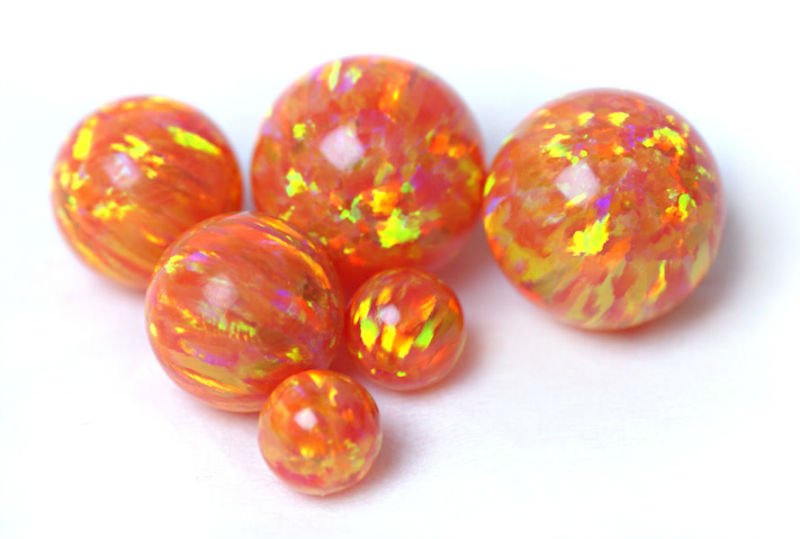 |
| Chalcedony: | ||
| Whilst Chalcedony are found worldwide in a variety of colours spanning from white and black all the way through to blues and purples, orange Chalcedony are arguably the most captivating. The name is derived from the name of the ancient Greek town Chalkedon in Asia Minor and is the name for a group of stones where the quartz crystals are too small to be seen without extreme magnification – stones such as agate, jasper, onyx and carnelian are in fact, types of Chalcedony. Popular throughout history, the stones were sacred to the Native American Indians, and used in spiritual ceremonies. Today the stones are thought to increase vitality, stamina and promote emotional harmony, whilst relieving feelings of depression and anxiety. | 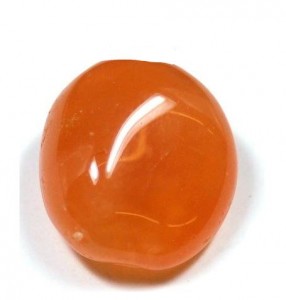 |
| Topaz: | ||
| Though Topaz are discovered in an abundance of colours, the most valuable and desirable shade of the mall is the golden orange-yellow type – the Imperial Topaz. This type of topaz increases in value as the depth of the orange and reddish hues of the stone increase. Referred to in history in the Book of Exodus, the High Priest wore a breastplate, reportedly featuring the Imperial Topaz as one of the 12 stones, each sacred to the twelve mighty angels who guard the gates to paradise. However today, Topaz is believed to promote self-confidence, banish bad dreams and protect the wearer from negative emotions and energy. Their hardness as a gemstone and usually flawless appearance has made them extremely popular throughout history in the use of jewellery. | 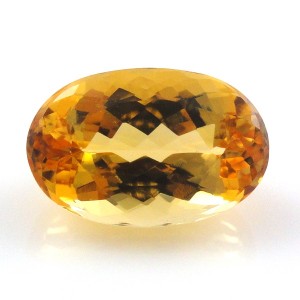 |
| Amber: | ||
| The word Amber may be synonymous with the beautiful shade itself, but first and foremost, Amber is a type of gemstone. Formed over millions of years, Amber started it’s like as a tree resin, that hardened and fossilized over time – because of this, you can often find small insects and creatures trapped inside the stones! This idea was later adapted into the much-loved, classic film Jurassic Park, where scientists were able to extract Dinosaur DNA from tiny Mosquitos inside deposits of Amber. With a rich history, Amber is also associated with the Lithuanian legend about Juraté, the Queen of the Sea, who fell in love with Kastyis, a Fisherman. Her jealous father punished his daughter by destroying her Amber palace and changing her into sea foam. Amber is used prevalently both within jewellery and ornaments since the Stone Age, from 13,000 years ago. Orna ments have been found in Mycenaen tombs and elsewhere across Europe. |
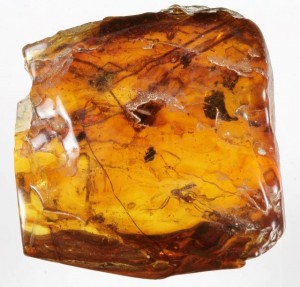 |
Bright, energetic and positive, a piece of jewellery that features any of the stones above, whether it be an orange ring, earrings or pendant makes a beautiful gift for yourself or a loved one. The brilliant and striking hue is easily transferable between day and occasion wear, when used in small designs to accent your ensemble, the shade will both enhance and compliment your finished look.






